Spotted in the Alentejo region of Portugal. Scaly-breasted Munia sound
The Scaly-breasted Munia or Spotted Munia (Lonchura punctulata), known in the pet trade as Nutmeg Mannikin or Spice Finch, is a sparrow-sized estrildid finch native to tropical Asia. A species of the genus Lonchura, it was formally described and named by Carl Linnaeus in 1758. Its name is based on the distinct scale-like feather markings on the breast and belly. The adult is brown above and has a dark conical bill. The species has 11 subspecies across their range and differ slightly in size and colour.
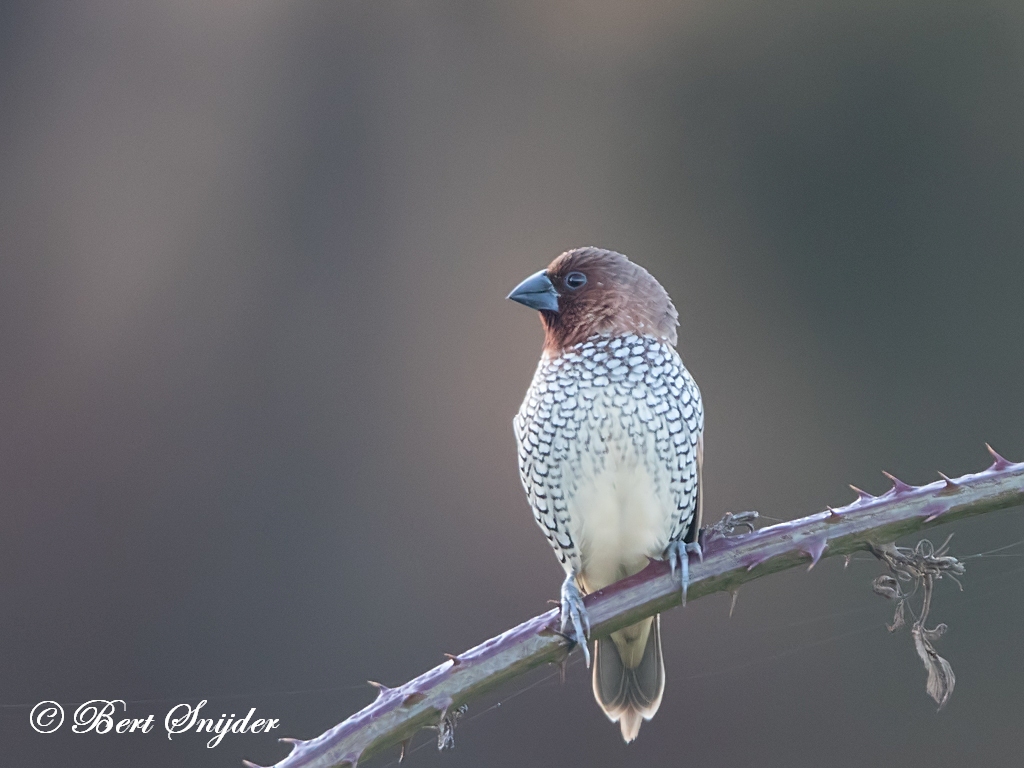
More photos at the bottom of this page.
This munia eats mainly grass seeds apart from berries and small insects. They forage in flocks and communicate with soft calls and whistles. The species is highly social and may sometimes roost with other species of munias. This species is found in tropical plains and grasslands. Breeding pairs construct dome-shaped nests using grass or bamboo leaves.
The species is endemic to Asia and occurs from India and Sri Lanka east to Indonesia and the Philippines (where it is called mayang pakíng). It has been introduced into many other parts of the world and feral populations have established in Puerto Rico and Hispaniola as well as parts of Australia and the United States of America. The bird is listed as of Least Concern by the International Union for Conservation of Nature (IUCN).
The Scaly-breasted Munia is about 11–12 centimetres (4.3–4.7 in) long and weighs 12–16 grams (0.026–0.035 lb). The adult has a stubby dark bill typical of grain eating birds, brown upperparts and a dark brown head. The underparts are white with dark scale markings. The sexes are similar, although males have darker markings on the underside and a darker throat than females.
Immature birds have pale brown upperparts, lack the dark head found in adults, and have uniform buff underparts that can be confused with juveniles of other munia species such as the tricolored munia (Lonchura malacca) across the Asian and island populations and the black-throated munia (Lonchura kelaarti) in parts of India or Sri Lanka. Populations within their wide distribution range show variations in plumage color and size.
Along with other Estrildines, these species are thought to have originated in Asia. The species has been introduced to other parts of the world due to its popularity as a cage bird and populations have established in the wild like in Portugal.
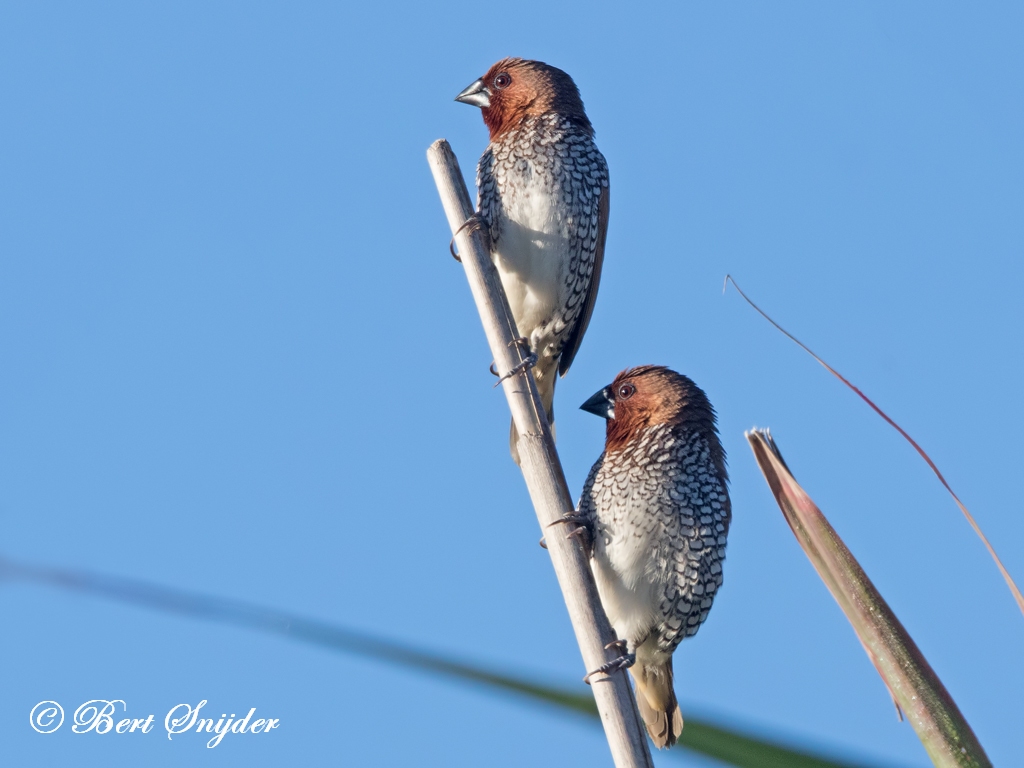
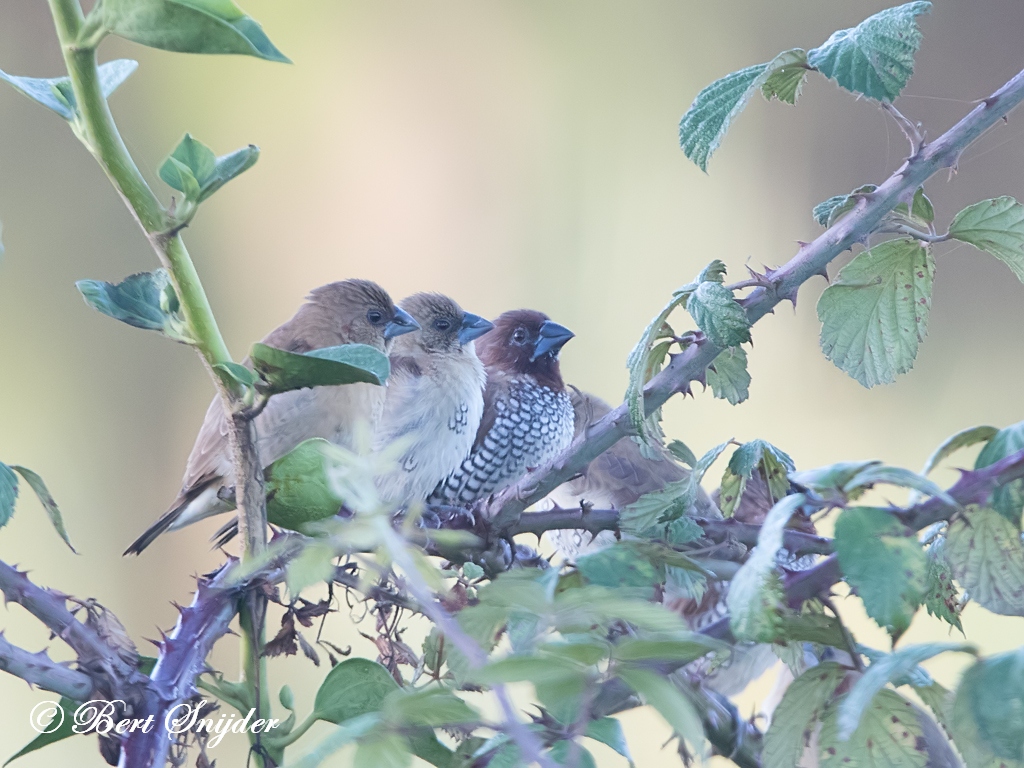
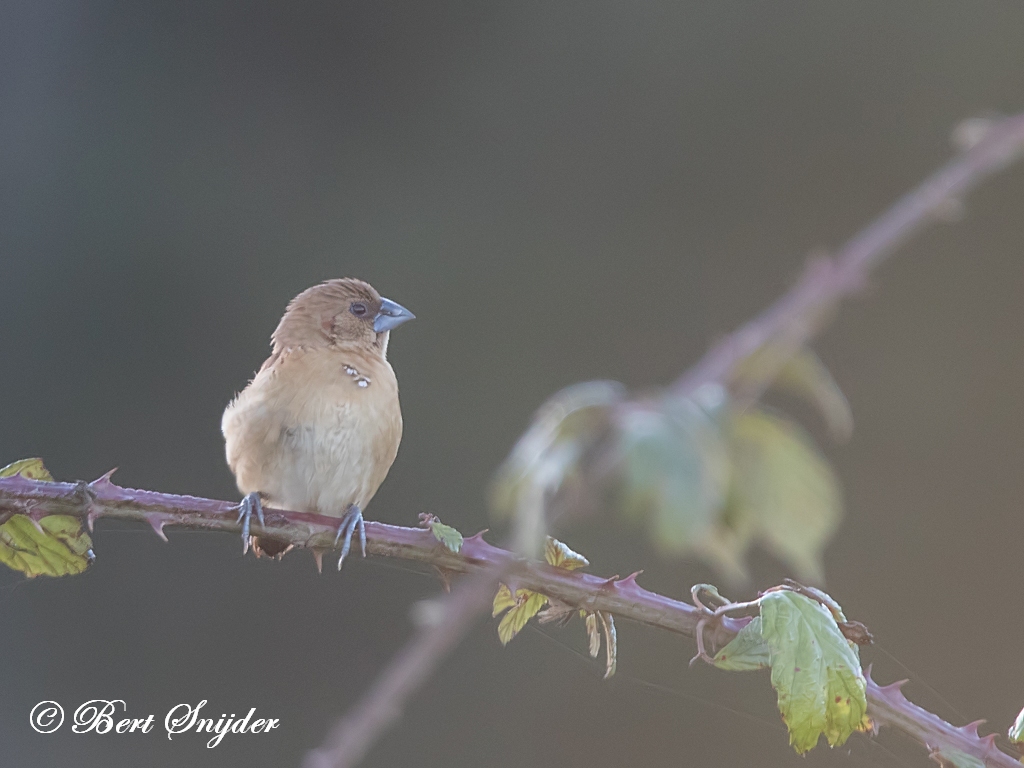
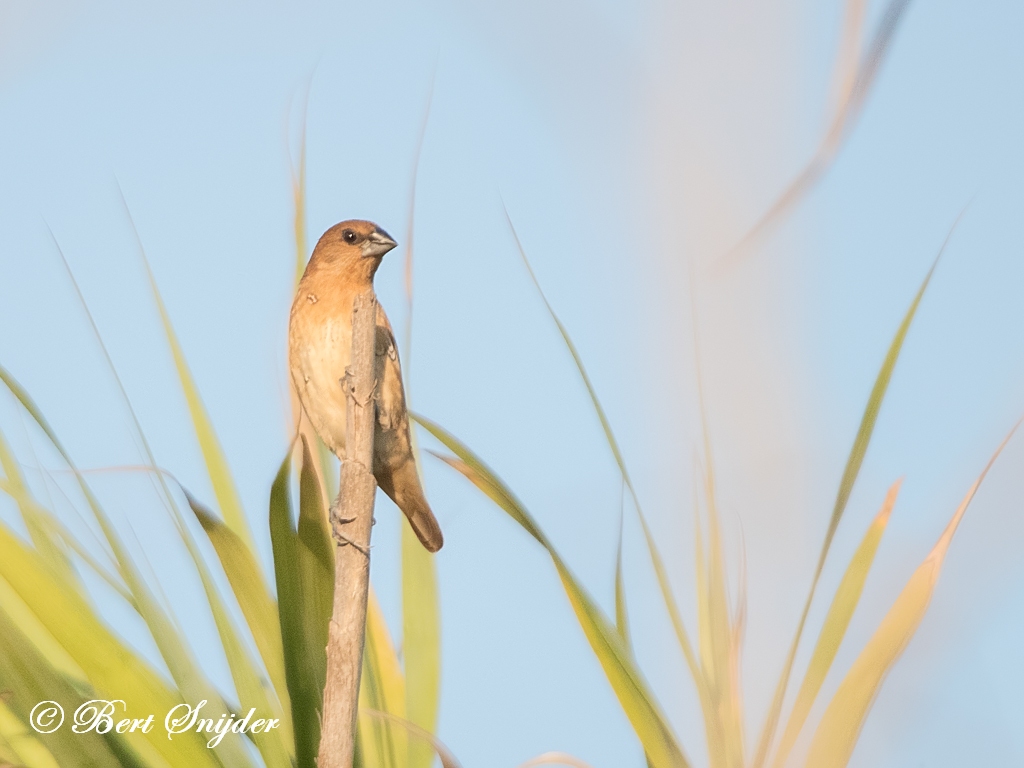
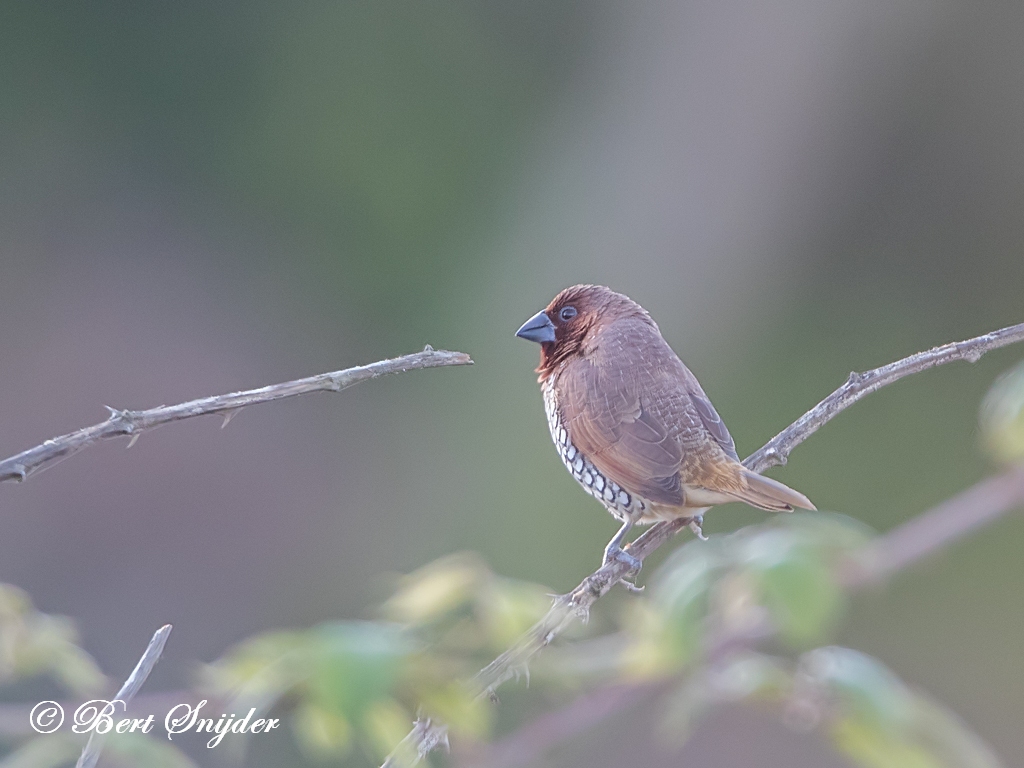
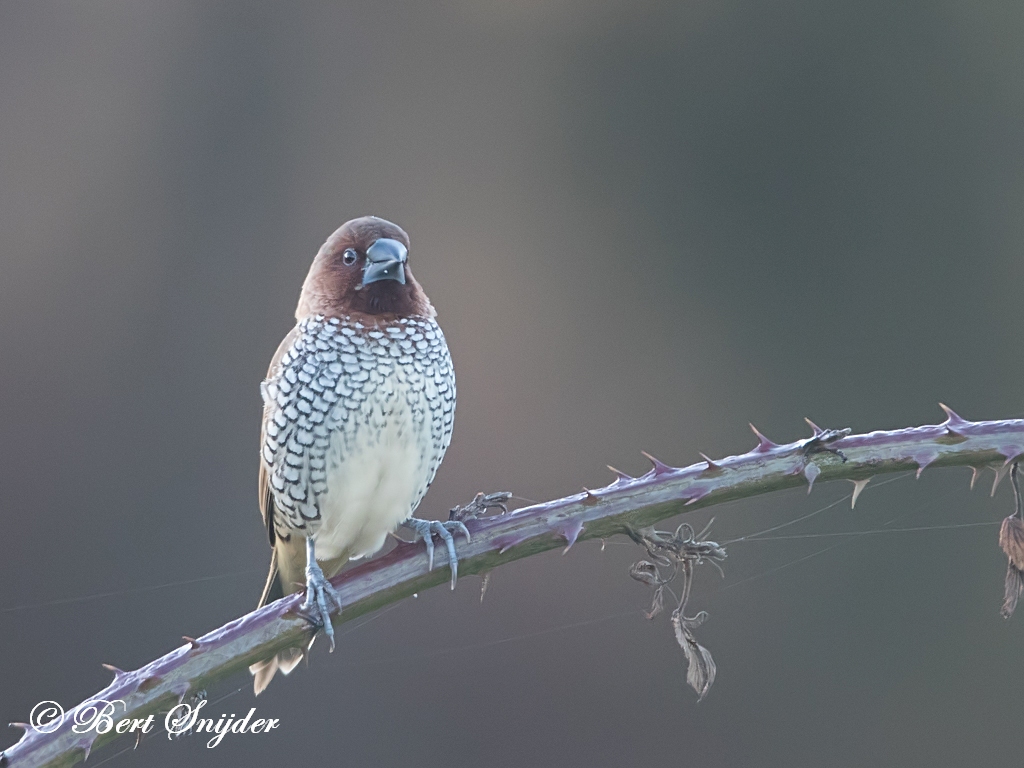
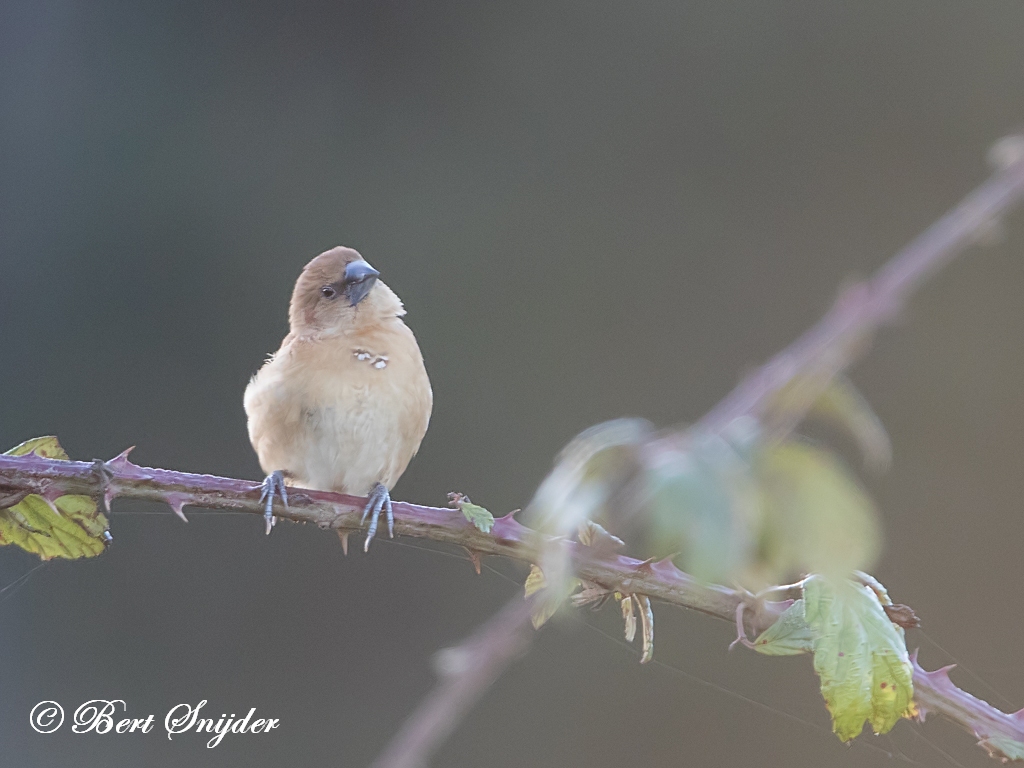
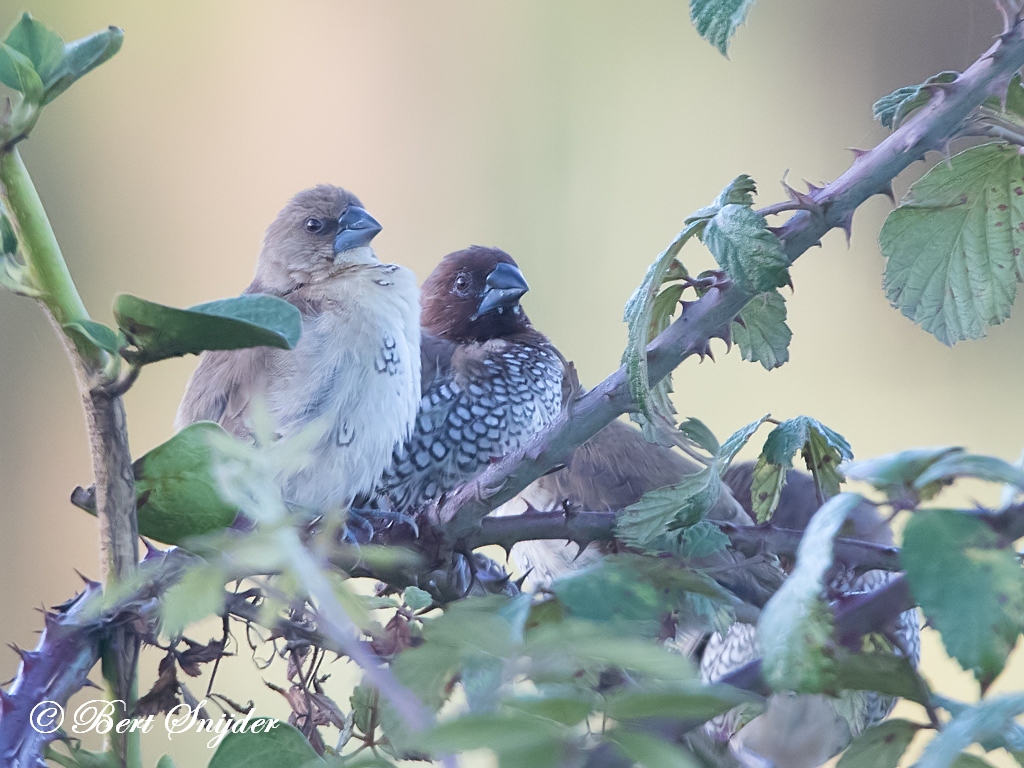
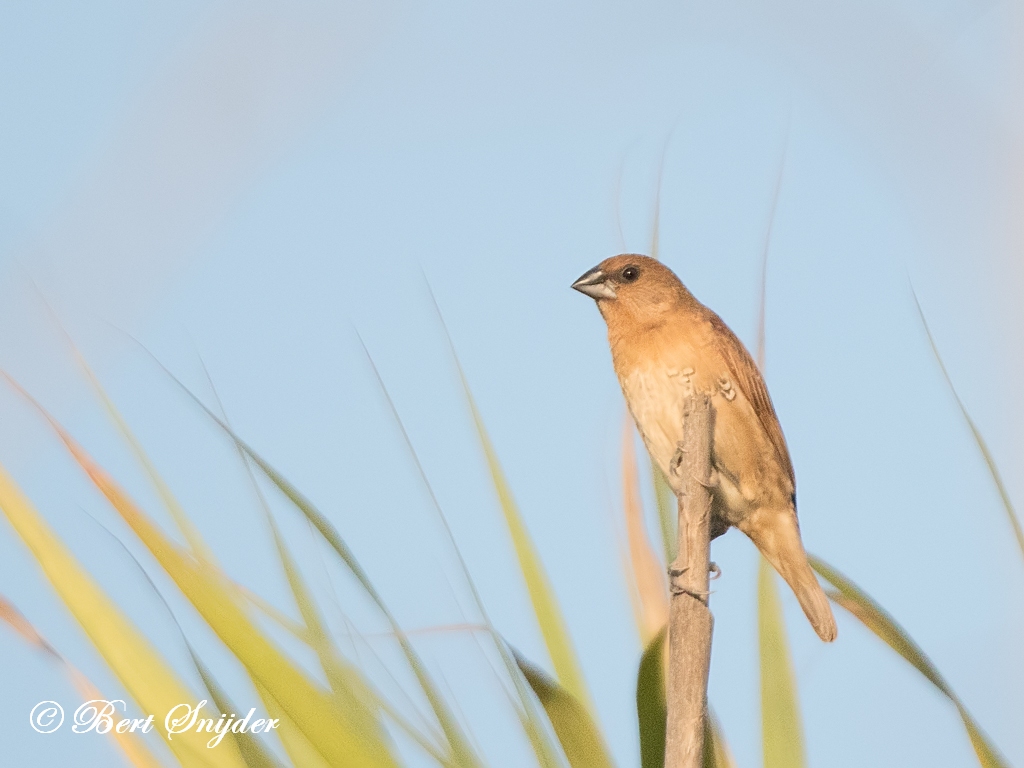
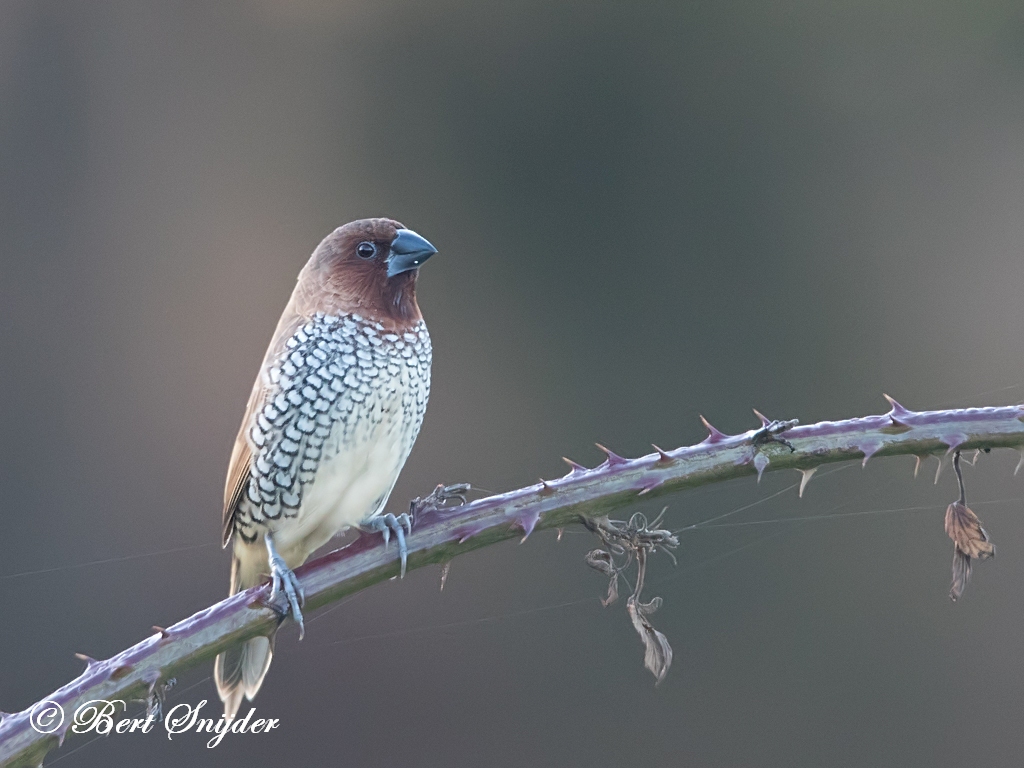
Other synonyms:
Bengali: তিলা মুনিয়া
Catalan: maniquí d’escates, Maniquí puntejat
Czech: Amadina muškátová, panenka muškátová
Danish: Muskatfinke
German: Muskatamadine, Muskatbronzemännchen, Muskatfink
English: Nutmeg Finch, Nutmeg Mannikin, Nutmeg Munia, Ricebird, Scaly-breasted Mannikin, Scaly-breasted Munia, Spice Finch, Spice Munia, Spotted Mannikin, Spotted Munia
English (India): Scaly-breasted Munia (Spotted Munia)
Spanish: Capuchino Nutmeg, Capuchino Pecho Escamoso, Capuchino Punteado, Cigüita Comearroz, Ciguíta Pechijabao, Monjita Acanelada, Pechijabado, Pinzón Acanelado
Spanish (Cuba): Gorrión canelo
Spanish (Dominican Rep.): Cigüita Comearroz, Ciguíta Pechijabao, Cigüita Pechijabao, Pechijabado
Spanish (Spain): Capuchino Punteado
Spanish (Mexico): Capuchino Pecho Escamoso
Spanish (Panama): Capuchino Punteado
Spanish (Puerto Rico): Gorrión Canela
Estonian: võrkamadiin
Finnish: Suomumanikki
French: Capucin damier, Capucin ponctué, Damier commun, Domino ponctué, Muscade
Haitian Creole French: Mannken miskad
Hungarian: muskátpinty
Indonesian: Bondol dada sisik, Bondol peking, Burung Bondol Peking
Italian: Domino, Munia pettosquamato
Japanese: Amihara, shima kinpara, shimakimpara, shimakinpara, Shima-kinpara
Japanese: シマキンパラ
Japanese (Kanji): 縞金腹
Korean: 얼룩무늬납부리새
Korean (Transliteration): eollung-munui-nap-buri-sae
Latin: Lonchura punctulata, Lonchura punctulata punctulata, Loxia punctulata
Lithuanian: Dryžoji munija, Muskatinė amadina
Latvian: garšvielu smailastīte
Malayalam: ചുട്ടിയാറ്റ
Mamasa: dena akadi
Malay: Burung Pipit Pinang, Pipit Pinang
Dutch: Muskaatvink
Norwegian: Muskatfink, Muskatnonne
Polish: mniszka muszkatowa
Pinyin: bān wén-niǎo, lín-xiōng wén-niǎo, suàn-mìng niǎo, xiǎo fǎng-zhī niǎo, yú-lín chénxiāng, zhēnzhū-niǎo
Portuguese: Capuchinho-dominó
Portuguese (Portugal): Capuchinho-dominó
Russian: Чешуйчатая амадина, Чешуйчатогрудая амадина
Slovak: Amadina muškátová, mníška muškátová
Swedish: Fjällig munia
Tamil: Pulli Chillai
Thai: นกกระจาบขี้หมู, นกกระติ๊ดขี้หมู, นกกระติ๊ดลาย, นกกะจาบขี้หมู, นกกะติ๊ดขี้หมู
Thai (Transliteration): nók kà-càap kʰîi-mŭu, nók kà-tít kʰîi-mŭu, nók krà-càap kʰîi-mŭu, nók krà-tít kʰîi-mŭu, nók krà-tít laay
Turkish: Pullu Munya
Vietnamese: Chim Di đá, Chim Ri đá, Di đá
Chinese: 小纺织鸟, 斑文鳥, 斑文鸟, 珍珠鸟, 算命鸟, 鱼鳞沉香, 鳞胸文鸟
Chinese (Traditional): 小紡織鳥, 斑文鳥, 斑文鳥〔斑胸文鳥〕, 珍珠鳥, 算命鳥, 魚鱗沈香, 鱗胸文鳥
Chinese (Taiwan, Traditional): 斑文鳥
Chinese (Taiwan): 斑文鸟
Birders Birdwatching Holiday in the Alentejo region of Portugal, Individual guided tours, trips, excursions and birding holiday.